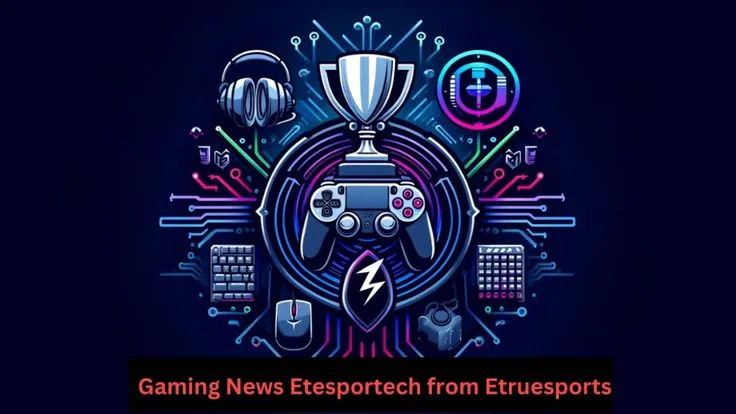Introduction
Tech Etruesports has evolved from a niche activity into a global phenomenon. With millions of viewers and players worldwide, Tech Etruesports is now an industry that blends gaming, entertainment, and technology. In this blog post, we will explore how Tech Etruesports is revolutionizing esports, from gaming equipment to streaming platforms, and how it shapes the future of competitive gaming.
What is Tech in Esports?
Before diving into the technological aspects, it’s important to understand what tech in esports entails. It refers to the innovations that enhance competitive multiplayer video game competitions. Popular games like League of Legends, Counter-Strike: Global Offensive, and Dota 2 all rely heavily on technology to bring together players and fans in dynamic, competitive environments.
How Technology is Changing the Game
The advancements in technology play a vital role in the growth and success of esports. Let’s explore some key areas where technology is significantly shaping the gaming landscape.
Gaming Hardware
Tech Etruesports players require specialized hardware to enhance their performance, and having the right equipment can give players an edge in competition.
Key Hardware for Esports Players:
-
Gaming PCs: Powerful systems with high-end processors and graphics cards ensure smooth gameplay.
-
Monitors: High-refresh-rate monitors (240Hz or higher) help reduce lag, which is critical in esports.
-
Keyboards and Mice: Specialized gaming gear offers precision and quick reactions.
-
Headsets: Clear communication and immersive sound are essential for competitive play.
Software Solutions
The right software tools are critical to optimize player performance. From game optimizers to streaming platforms, these tools help enhance the gaming experience.
Popular Software in Esports:
-
Game Optimizers: Tools like NVIDIA GeForce Experience adjust settings for peak performance.
-
Streaming Software: Platforms like OBS and Streamlabs enable seamless live streaming.
-
Analytics Tools: Software like Mobalytics helps players analyze gameplay and improve strategies.
Internet and Connectivity
A fast, reliable internet connection is one of the most important aspects of esports. Players need low latency and high-speed internet to ensure fair and competitive gameplay.
-
Low Latency: A faster connection minimizes lag during intense matches.
-
Fiber-Optic Internet: Fiber-optic networks ensure high speeds and reduced latency for esports players.
Streaming and Broadcasting
The rise of Tech Etruesports is also fueled by streaming platforms, which allow players and teams to broadcast their gameplay live to millions of fans. These platforms have become the primary way fans consume competitive gaming content.
Popular Streaming Platforms:
-
Twitch: The leading platform for live-streaming competitive gaming.
-
YouTube Gaming: A well-known platform for esports content, including live streams and on-demand videos.
-
Facebook Gaming: A growing platform for esports streaming and community-building.
Virtual Reality (VR) and Augmented Reality (AR)
The adoption of VR and AR in esports is transforming the way players engage with games and how fans experience competitions.
-
Virtual Reality (VR): VR offers a fully immersive experience, bringing esports to a new level.
-
Augmented Reality (AR): AR enhances gameplay by creating interactive experiences for fans watching live events.
Artificial Intelligence (AI)
AI is increasingly becoming an essential part of Tech Etruesports, from improving game design to providing players with smart training tools. AI is revolutionizing the way players practice and compete.
-
AI in Game Development: AI allows for smarter NPCs and adaptive game environments.
-
AI for Player Performance: Tools like aim trainers use AI to simulate in-game conditions and refine player skills.
Future Trends in Esports Technology
As the esports industry continues to grow, several new technologies are set to impact the future of gaming.
5G Technology
5G will bring faster internet speeds, reduced latency, and better connectivity, enhancing the overall gaming experience, particularly for mobile esports.
Cloud Gaming
Cloud gaming platforms, like Google Stadia and NVIDIA GeForce Now, allow players to access esports games without needing expensive hardware. This innovation makes competitive gaming more accessible to a global audience.
Blockchain and NFTs in Esports
Blockchain technology is entering the esports world for secure transactions, digital assets, and in-game items. NFTs (non-fungible tokens) enable players and fans to own unique collectibles.
Conclusion
As Tech Etruesports continues to develop, technology will remain the driving force behind the growth of the esports industry. From powerful gaming hardware to AI and blockchain innovations, the tech behind Tech Etruesports is constantly evolving, ensuring better experiences for players and fans alike.
The future of esports is bright, with even more advancements on the horizon. Whether it’s through optimized performance, immersive experiences, or new ways to engage with gaming, technology will continue to shape the competitive gaming landscape.








7fe2gi
Very interesting info !Perfect just what I was searching for! “Charity is injurious unless it helps the recipient to become independent of it.” by John Davidson Rockefeller, Sr..